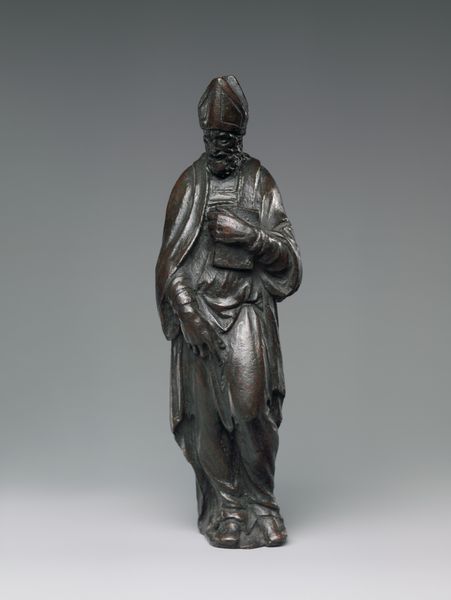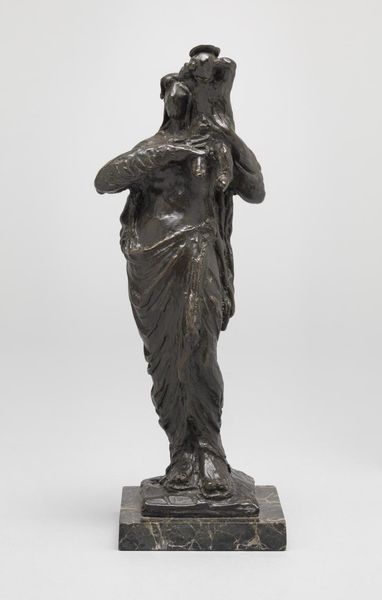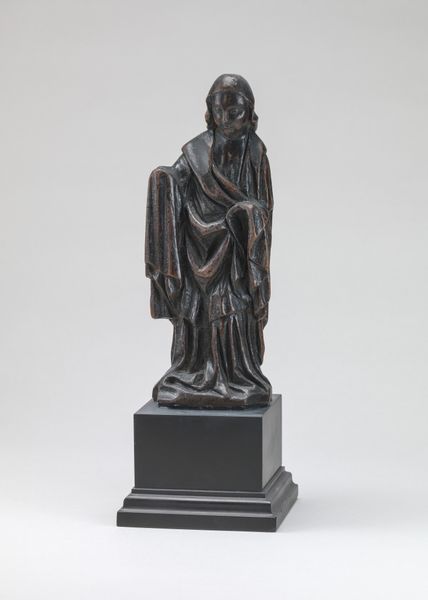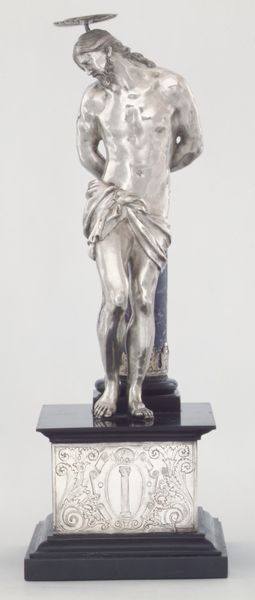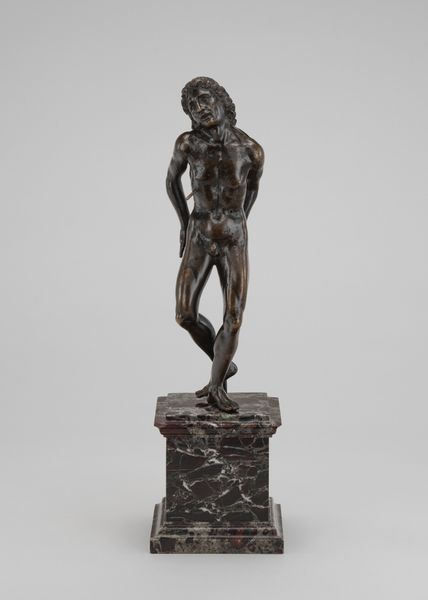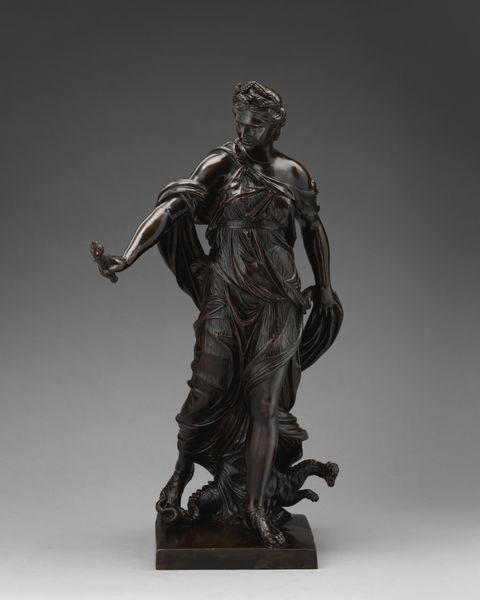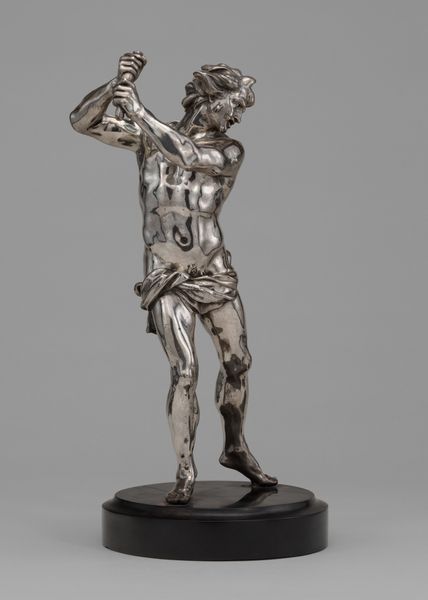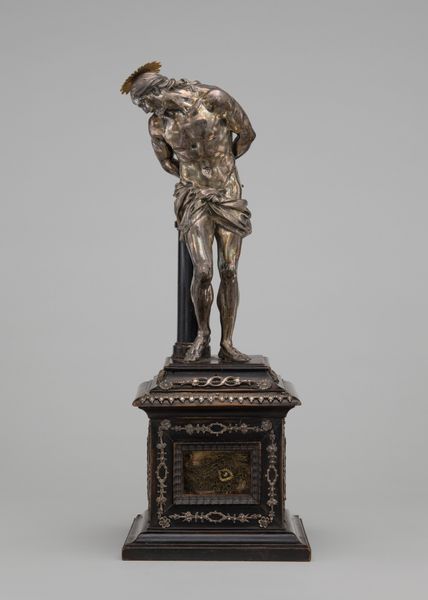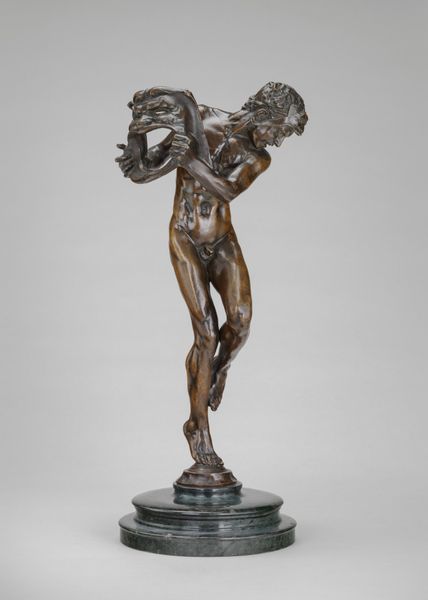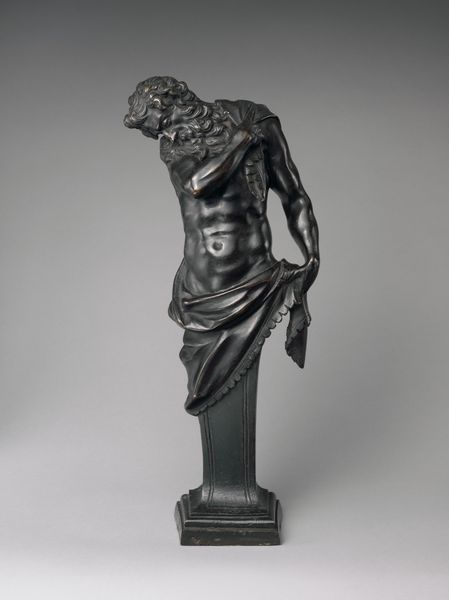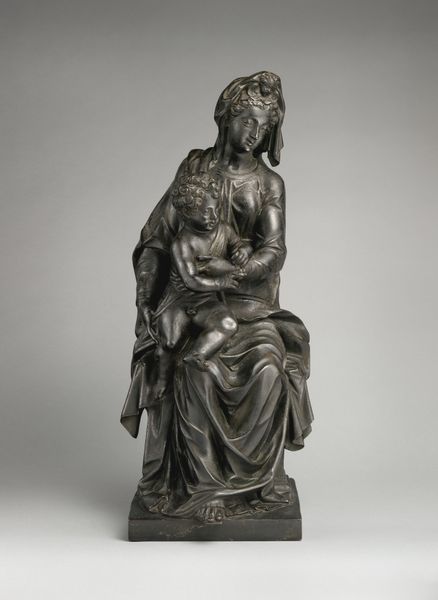
bronze, sculpture
#
baroque
#
sculpture
#
bronze
#
figuration
#
sculpture
#
history-painting
#
nude
Copyright: Rijks Museum: Open Domain
François Du Quesnoy sculpted this bronze Ecce Homo in the seventeenth century. The statue shows us Christ after his trial, bound and crowned with thorns, as presented by Pontius Pilate to a crowd baying for his blood. Du Quesnoy was from Brussels but spent his career in Rome where he became one of the leading sculptors of the Roman Baroque. ‘Ecce Homo’ – ‘behold the man’ – became a popular subject for art in the Catholic countries of Europe during the Counter-Reformation. The image invited an emotional response from viewers, encouraging them to identify with Christ’s suffering as well as to reflect on their own sinfulness. The figure of Christ also served as a potent symbol of Christian authority and martyrdom at a time when the established church felt itself to be under threat. Art historians can research the political and religious environment in which such artworks were made, using contemporary sources such as theological treatises, personal letters, and institutional records. This reminds us that the work of art is always a product of its time.
Comments
rijksmuseum about 2 years ago
⋮
Ecce Homo (‘Behold the Man’). Pontius Pilatus is said to have uttered these words when he mockingly presented Jesus to the Jewish people as their king, adorned with a crown of thorns and wearing a cloak. This scene of Christ’s suffering is aptly presented in this bronze. The Flemish sculptor Du Quesnoy, who worked in Rome, portrayed this forlorn moment of God’s son with restrained emotion.
Join the conversation
Join millions of artists and users on Artera today and experience the ultimate creative platform.

